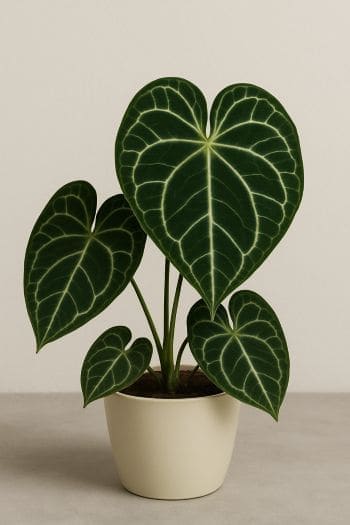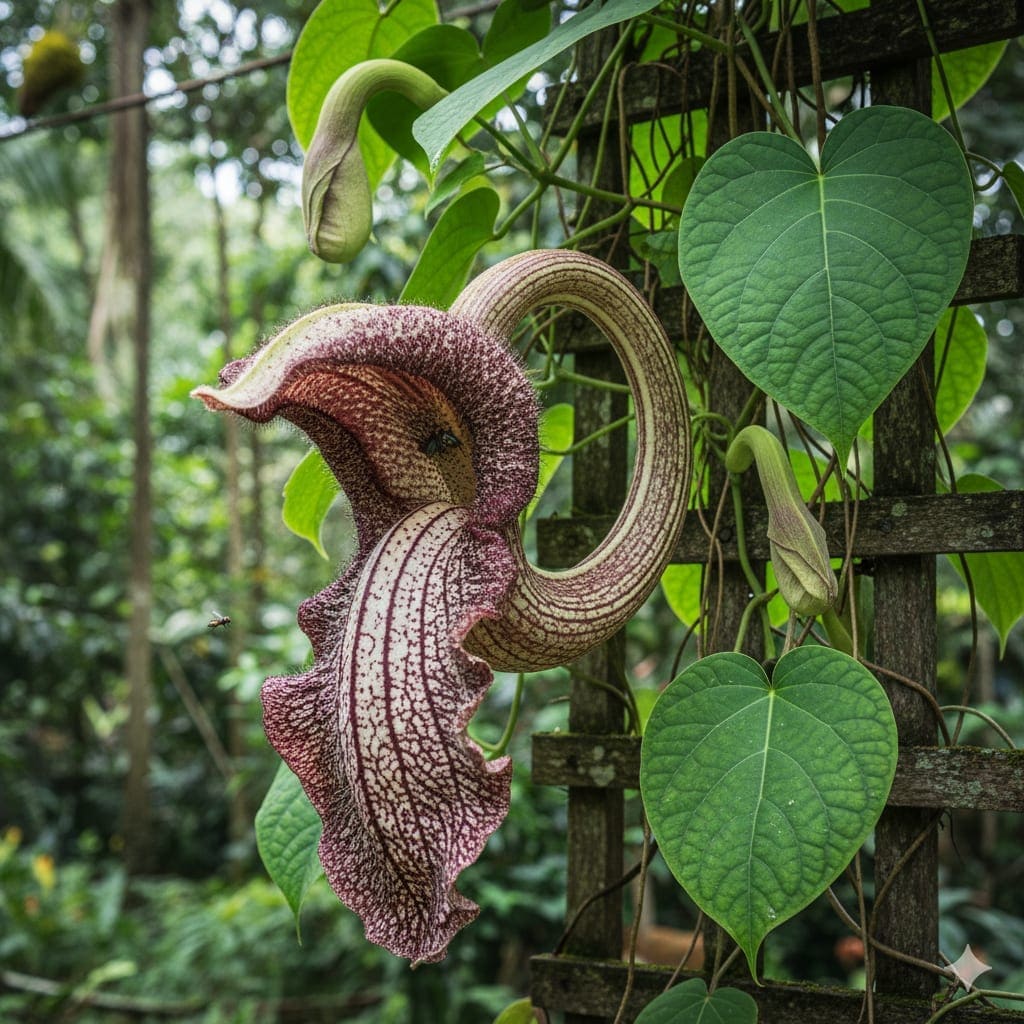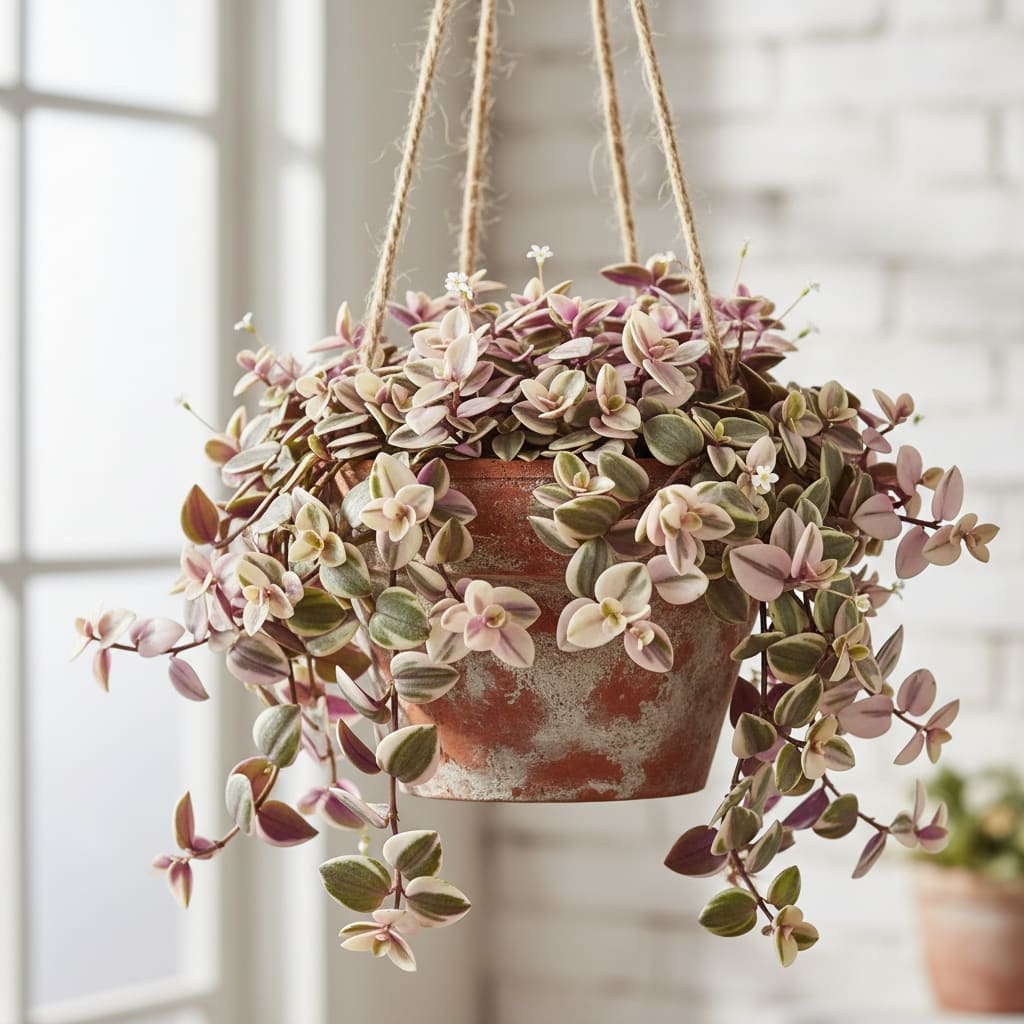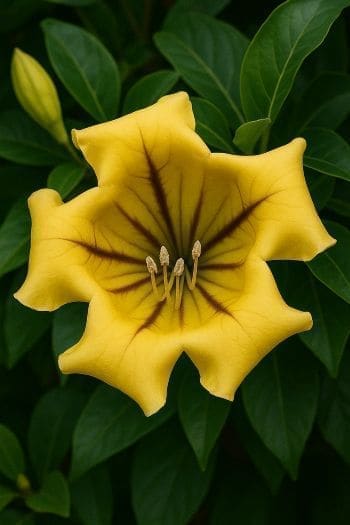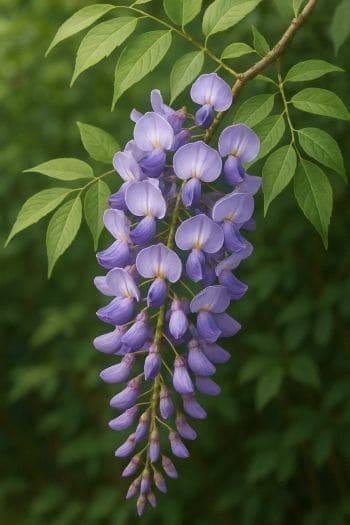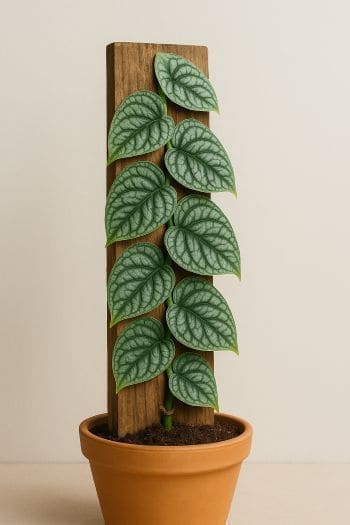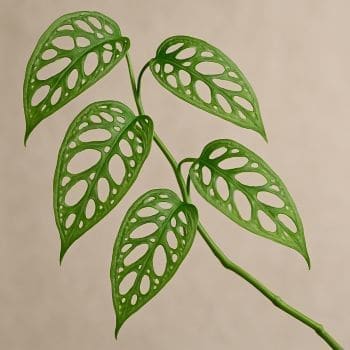Anthurium crystallinum Care & Growing Guide
Overview
Anthurium crystallinum is a striking tropical plant prized for its large, velvety, heart-shaped leaves with prominent silvery-white veins. Native to the rainforests of Central and South America, this species thrives in warm, humid environments with filtered light. In its natural habitat, it often grows as an epiphyte on trees, drawing moisture and nutrients from its surroundings rather than soil alone.
Its ornamental foliage and relatively manageable size make it a favorite among indoor plant enthusiasts. The plant’s unique leaf texture and patterning give it a luxurious appearance, and with proper care, it can be a long-lived and rewarding addition to any collection.
Identification & Growth Habit
Anthurium crystallinum is a slow to moderate grower with a clumping growth habit. It produces elongated petioles supporting the large, heart-shaped leaves, which can reach 12–18 inches (30–45 cm) in length under ideal conditions. The foliage surface is velvety to the touch, with a deep green color contrasted by prominent, shimmering veins.
While primarily grown for its foliage, mature plants may produce inflorescences consisting of a spadix and spathe, typical of the Araceae family. In cultivation, it can be trained to climb a moss pole or allowed to trail slightly, though it is not a vigorous climber like some aroids.
Light & Placement
Provide bright, indirect light to mimic the dappled sunlight of its rainforest canopy origin. An east-facing window or a spot near a bright window with sheer curtains works well. Avoid prolonged direct sunlight, which can scorch the delicate leaves, and avoid overly dim spots, which can slow growth and reduce leaf size.
- Ideal placement: Near an east or north-facing window, or a few feet back from a bright south/west window with filtered light.
- Artificial lighting: Full-spectrum grow lights can supplement natural light, especially in winter or low-light homes.
Watering & Humidity
Water when the top 2 inches (5 cm) of the potting mix have dried. Check moisture with your finger rather than following a strict schedule. Overwatering can cause root rot, while underwatering may lead to leaf curl or browning edges.
Maintain humidity above 50%, ideally around 70% for lush growth. Use a humidifier, group plants together, or place the pot on a pebble tray with water to increase ambient moisture. Avoid placing the plant near heating vents or in overly dry rooms.
Soil & Repotting
Use a well-draining, airy mix that reflects its epiphytic tendencies. A blend of orchid bark, perlite, and peat moss or coco coir is effective. Ensure the container has drainage holes to prevent waterlogging.
Repot every 1–2 years in spring or when roots begin to outgrow the pot. Choose a container only slightly larger than the current one to avoid excess moisture retention.
Fertilizing
Feed monthly during the active growing season (spring and summer) with a balanced, water-soluble houseplant fertilizer diluted to half strength. Organic options like fish emulsion can also be used. Reduce or stop feeding in autumn and winter when growth slows.
Pruning & Training
Remove yellowing or damaged leaves at the base with clean, sharp scissors to maintain plant health and appearance. While not a vigorous climber, Anthurium crystallinum can be gently trained to grow upright against a moss pole or trellis, which can support larger leaves and mimic its natural growth habit.
Propagation
Step-by-Step: Stem Cuttings
- Select a healthy stem with at least one node and preferably an aerial root.
- Use sterilized scissors or pruners to make a clean cut just below the node.
- Place the cutting in water or directly into moist, well-draining potting mix.
- If rooting in water, change the water every few days; once roots are 2–3 inches long, transfer to soil.
- Keep in a warm, humid environment with bright, indirect light until established.
Division
When repotting, gently separate clumps ensuring each division has roots attached. Pot each division into its own container and care for as usual.
Common Problems
- Root rot: Caused by overwatering or poorly draining soil. Remedy by trimming affected roots and repotting in fresh, airy mix.
- Leaf browning: Often due to low humidity, underwatering, or excess direct sun. Adjust placement and watering routine.
- Pests: Susceptible to spider mites, mealybugs, and scale. Treat with insecticidal soap, neem oil, or by wiping leaves with a damp cloth.
- Yellow leaves: Can indicate overwatering, nutrient deficiency, or natural aging of older leaves.
Toxicity & Pet Safety
Anthurium crystallinum is toxic if ingested by humans, cats, or dogs due to calcium oxalate crystals. Keep out of reach of pets and children, and handle with care if pruning or propagating. In case of ingestion, seek veterinary or medical advice promptly.
Styling & Decor Tips
Showcase the plant where its large, patterned leaves can be admired up close. It pairs well with minimalist pots that don’t compete with its foliage. Position on a plant stand or shelf at eye level, or group with other tropicals to create a lush indoor jungle effect. Its heart-shaped leaves also make it a thoughtful gift for plant lovers.
Varieties & Cultivars
Several Anthurium species and hybrids resemble A. crystallinum, such as Anthurium clarinervium and Anthurium magnificum. Hybrids may combine traits for larger leaves or different venation patterns. When buying, confirm the botanical name to ensure you’re getting the desired species.
Buying Tips & Maturity
Look for plants with firm, unblemished leaves and no signs of pests. Younger plants may have smaller leaves and less pronounced venation; with proper care, leaf size and pattern will improve as the plant matures. Check the root system if possible — healthy roots are firm and light-colored.
Seasonal Care
- Spring/Summer: Peak growth period; increase feeding and maintain high humidity.
- Autumn: Gradually reduce watering and feeding as growth slows.
- Winter: Keep warm, avoid drafts, and provide supplemental light if needed. Water sparingly but do not allow complete dryness for extended periods.
FAQ
- How fast does Anthurium crystallinum grow? Growth is moderate; new leaves may appear every few weeks in ideal conditions.
- Why are my plant’s leaves turning yellow? This can result from overwatering, low light, or natural aging of older leaves.
- Can I grow it outdoors? In tropical or subtropical climates, it can be grown outdoors in shaded, humid areas. Elsewhere, keep it indoors.
- Does it flower indoors? Yes, but blooms are modest compared to its foliage and may not appear regularly without optimal care.
- How big can the leaves get? Mature leaves can reach 12–18 inches long in home conditions, sometimes larger in greenhouses.
Sources: Wikipedia, The Spruce
